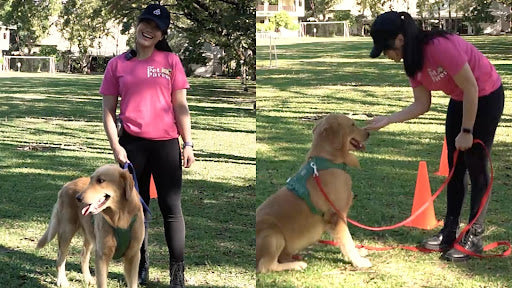
Managing Territorial Aggression: Effective Dog Training Strategies in the Philippines
Introduction:
Territorial aggression in dogs can pose significant challenges for both pet owners and their furry companions. From barking and growling to lunging and even biting, this behavior can be intimidating and potentially dangerous. However, with the right training strategies and techniques, it is possible to manage and modify territorial aggression effectively. In this article, we will explore various training methods tailored to the unique context of the Philippines, providing insights and practical tips for addressing this behavior and fostering a harmonious relationship between dogs and their owners.
Understanding Territorial Aggression:
Territorial aggression in dogs is a natural behavior rooted in their instinct to protect their territory from perceived threats. Common triggers include unfamiliar people, animals, or objects encroaching on their space. Signs of territorial aggression may include barking, lunging, snarling, and even physical aggression. It’s essential to understand the underlying reasons behind this behavior to effectively address it.
Positive Reinforcement Training Techniques:
Positive reinforcement training is a highly effective approach for modifying territorial aggression in dogs. By rewarding desired behaviors with treats, praise, or toys, dogs learn to associate positive outcomes with appropriate responses. For example, when a territorial dog remains calm and relaxed in the presence of a perceived threat, they can be rewarded, gradually reinforcing the desired behavior.
Socialization and Exposure:
Socialization plays a crucial role in preventing and managing territorial aggression. Introducing dogs to various environments, people, and animals from an early age helps desensitize them to potential triggers. For instance, exposing a territorial dog to new situations in a controlled and positive manner can help reduce their fear or anxiety and minimize aggressive responses.
Establishing Leadership and Boundaries:
Establishing clear leadership and boundaries is essential for managing territorial behavior in dogs. Dogs look to their owners for guidance and direction, so it’s crucial to assert leadership in a positive and consistent manner. Setting clear rules and boundaries helps dogs understand what behavior is acceptable and reinforces their trust and respect for their owners.
Environmental Management:
Modifying the dog’s environment can also help minimize triggers for territorial aggression. Providing a safe and comfortable space for the dog, away from potential stressors, can help reduce anxiety and prevent aggressive reactions. Additionally, offering mental stimulation and regular exercise can help alleviate boredom-related aggression and promote overall well-being.
Seeking Professional Help:
In some cases, addressing territorial aggression may require professional assistance from a certified dog trainer or behaviorist. These professionals have the expertise and experience to develop tailored training plans based on the individual dog’s needs and circumstances. Seeking professional help can provide pet owners with valuable guidance and support throughout the training process.
Case Studies and Success Stories:
Real-life examples of dogs with territorial aggression issues and their successful training journeys can offer valuable insights and inspiration. For instance, a dog that once exhibited aggressive behavior towards strangers may undergo positive transformation through consistent training and socialization efforts. These success stories highlight the effectiveness of training strategies and provide hope for pet owners facing similar challenges.
Addressing Safety Concerns:
While implementing training strategies, it’s essential to prioritize safety for both the dog and other individuals or animals involved. Practicing caution and implementing safety measures, such as using a muzzle or leash in potentially volatile situations, can help prevent conflicts and ensure everyone’s well-being. Additionally, learning how to safely manage and de-escalate confrontations can minimize the risk of injury.
Conclusion:
In conclusion, managing territorial aggression in dogs requires patience, dedication, and a comprehensive approach. By understanding the underlying causes of this behavior and implementing effective training strategies, pet owners can help their dogs overcome aggression and develop more appropriate responses to perceived threats. Positive reinforcement, socialization, environmental management, and professional guidance are essential components of a successful training program. With commitment and consistency, pet owners can foster a safe and harmonious environment for their dogs and create stronger bonds based on trust and mutual respect.
No Comments Yet